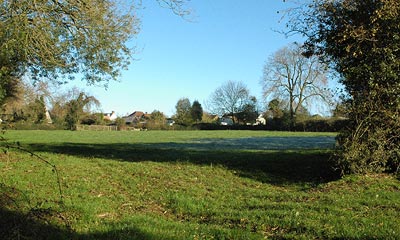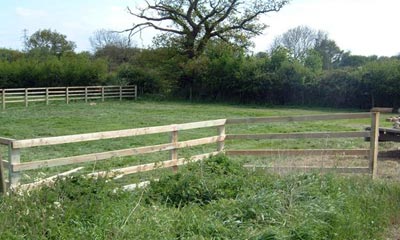Is the green belt getting looser?
It was a simple enough complaint made at a public meeting about possible house building on the green belt: "We moved to a village to get away from the city, we don't want the city to move towards us."
England's green belts mark their 50th anniversary next year just as debate gathers pace about their future as the wedges which restrain the growth of towns and cities.
Helen Whitmore is among campaigners trying to protect the green belt in Bedfordshire and Northamptonshire.
For her, the green belt around Luton and Milton Keynes may not be glitzy open countryside but it is an essential tool which has stood the test of time.
"Without open spaces between communities, it is extremely difficult in this day and age to create communities and they become soulless and lost," she says.
The Barker report, which said 140,000 extra homes needed to be built each year, has raised fears that new development could eat into the green belt.

Origins
Some experts believe public clamour to save the green belts is really a demand for safeguarding simple green fields.
Green belt is a specific planning tool, first introduced for London in 1938 but rolled out to England as a whole by a government circular in 1955.
It urged local councils to consider designating green belts where they wanted to restrict urban growth.
Green belts now cover 13% of England (around one-and-a-half million hectares) - Wales has only recently begun its own green belt policy while in Scotland the concept is rather broader.
The last full study, by academics at Oxford Brookes University in 1993, said green belts had successfully checked unrestricted urban sprawl but more work was needed on its effect in encouraging urban regeneration.
Illusion?
Ministers have proudly declared that the amount of green belt increased by 19,000 hectares between 1997 and 2003.
But Conservative shadow planning minister John Hayes has unearthed figures from the House of Commons library suggesting that almost all the extra land is in northern areas like Blyth Valley, Tynedale, Bolsover and Blackburn.
He told BBC News Online: "The additions are restricted to places which are not places where the development pressure is greatest. So it is an illusory green belt."
Henry Oliver, from the Campaign to Protect Rural England (CPRE) echoed those concerns, saying: "What matters most about the green belt is where it is, not how much of it there is."
But a spokesman for the Office of the Deputy Prime Minister stressed all green belt land had a specific purpose - to prevent unnecessary urban sprawl.
"Therefore, any land created and classified as green belt is fulfilling a role, which is to stop unnecessary development - the total number is important," he said.
Relaxation?
New government figures on the extent of the green belt are due to be released later this month.
Planning Minister Keith Hill says most of the small rise in new building on green belt in Labour's early years was authorised by the previous Tory government.

In a Commons debate earlier this year, he stressed that green belt land was only being lost at a rate of 0.02% a year, with no significant reductions in areas affected by development pressure.
Mr Hill declared: "Let me say loud and clear: we have no plans to relax planning controls on the green belt."
But hopes of such a policy change could partly explain the motives of investors buying plots of green belt lands from new-look property companies.
The government has said it is reviewing all planning guidance - although a spokesman insisted there was no plan to re-examine the green belt policy "in the immediate future".
'Stagnation'
But Ron Tate, vice-president of the Royal Town Planning Institute, said there were signs the policy could change.
The institute says it does not want to abolish green belts but believes they are currently too restrictive and wants more of them reviewed at the same time as local and regional strategic plans.
Mr Tate complained green belts could cause environmentally damaging "leap frogging", where people live in one place but have to commute to work elsewhere.
He went on: "There are areas that have small settlements where green belts wash over the whole lot. These villages are stagnating in the middle of it. If areas do not grow, they do not prosper."
Mr Tate suggested people often thought green belt was "all lovely like chocolate box covers" when a lot of it was "awful land" containing quarries or landfill sites.
Such disputes will rage even louder if the government does look again at whether to tighten or loosen the green belt.
BBC News, 12th September, 2004
